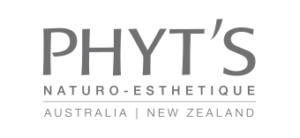The mighty power of marine ingredients in skincare products
Seaweeds and algae are major organisms in the aquatic ecosystem. Although commonly interchanged, these two may be similar in some ways but have major differences.
Algae are chlorophyll-containing organisms commonly found in marine and freshwater habitats.
They are the most primitive organisms on earth, with fossils, dating back to three billion years. They can be macroscopic or microscopic and can either have a unicellular or multicellular cell structure.
Although there is no specific estimation on the number of algae in the entire world, there exist over 320,500 identified species.
Seaweeds are plant-like organisms that attach themselves to rocks and other hard substances in an aquatic environment. They belong to the algae family.
They have been useful to humankind mainly for food, industrial products, medicinal uses, and even fertilisers.
Seaweeds belong to three different groups with more than 10,000 species namely, brown algae, green algae, and red algae. While green algae are common in freshwater and terrestrial situations, red and brown algae are common in marine environments.
What about phytoplankton?
All algae are phytoplankton but not all phytoplankton are algae. Phytoplankton are free floating, photosynthetic microorganisms found in lakes, streams, oceans. They include algae, cyanobacteria, protists, and diatoms.
Phytoplankton forms the base of the marine food chain. Without it, over time, marine life would cease to exist. Because of their predominance in the oceans, they are the world’s biggest carbon sink. That is, they take in CO2 and give out oxygen during photosynthesis. It has been estimated that up to 75% of the world’s oxygen comes from phytoplankton.
More on algae
There are four types of Algae:
- Red
- Green
- Blue
- Brown
Each has its own powerful properties.
Types of Algae
Brown algae (chrommophyceae). Contains high levels of iodine (Iodine is an important mineral for healthy hair growth) and a good source of Vitamin C and E. Brown algae have a tightening effect which helps improve skin firmness. They also stimulate the synthesis of collagen.
Green Algae (chlorophycea). Contains large amounts of Vitamin C and Magnesium.
Red Algae (rhodophyceae) .Contains Beta Carotene and Protein.
Blue Algae (cyanophyceae). This type of algae contains many B. Vitamins, along with Amino Acids, polyunsaturated fats, Calcium and Protein.
Properties and Uses
Not only do Algae have some wonderful protective properties, they are also extremely moisturising. They work as a natural humectant providing a reserve of water in the tissues, locking water in the upper layers of the skin to keep it supple and hydrated. They have a real affinity with the skin.
In cosmetics, they can help to regulate moisture balance in the different layers of the epidermis (our outer layer of skin).
Algae have a high content of antioxidants useful to fight free radicals and oxidative stress that lead to skin ageing. Combined with anti-inflammation properties, they are perfect to fight skin ageing and also the negative effects of pollution on the skin.
Algae provides the skin with minerals and trace elements, essential nutrients that help our skin maintain and reinforce its natural functions.
The amino acid content of green algae is very similar to the human collagen.
Finally algae brighten the skin by reducing the activity of the process that causes pigmentation.
Key Minerals
Magnesium: Relaxes the body, soothes, calms and desensitises the skin.
Potassium: Purifying, potassium helps to push fluids and toxins out of the skin’s cells.
Sodium: It draws moisture into the cells, keeping skin soft and supple.
Calcium: This mineral found in Algae, helps to promote collagen and elastin production.
Iodine: Detoxifies and increases the body’s metabolism and stimulates cellular renewal.
Bromide: Relaxes and soothes the skin tissues.
With all these skin loving benefits, it is no wonder that Algae prove to be a popular ingredient in many of our skin care applications.
Phyt’s products with algae:
- Panacée Cream- Multi function cream for all mature skin
- Anti-Pollution Concentrate – Radiance concentrate to boost cell renewal
- Anti-Pollution Cream – Perfect to protect your skin against urban pollution
pro.phyts.com.au





